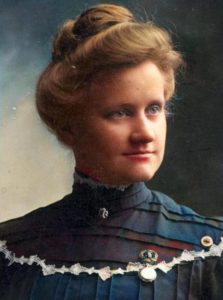Elizabeth DeLong School of the Deaf
School Registration Starts July 9th!
Registration for the 2024-2025 School Year will open July 9, 2024. You will receive an email through PowerSchool, our student information system on that day. Directions will be in the email and you can watch this informational video below:
School Calendar 2024-2025
School will start Wednesday August 14, 2024!
You can click on the link for the 2024-2025 PDF copy of the calendar: EDS 2024-2025 Calendar
Elizabeth DeLong School of the Deaf
In October 2020, Utah Schools for the Deaf and the Blind opened a new Deaf School in Springville, Utah. This program was named in honor of Elizabeth DeLong. This school offers direct communication with teachers and peers in spoken language and American Sign Language, depending upon the needs of the students which is determined by their Individualized Education Plan (IEP)Team.
Dr. Nathan Harrison serves as the educational director of the school: nathanh@usdb.org
Phone: 801-431-5100
Address: 1160 W. 900 S. Springville, Utah, 84663
2023-2024 School Calendar
English Calendar Spanish Calendar – calendario escolar
Who was Elizabeth DeLong?
Elizabeth DeLong, known as “Libbie,” was born hearing on April 2, 1877, in Panguitch, Utah, to Albert DeLong and Elizabeth Houston. At the age of five, Libbie became Deaf from scarlet fever and smallpox. At home, her mother was busy rearing her large family and wasn’t able to pay much attention to Libbie, but she was very close to her older sister, Dicey. She taught Libbie to practice her speech and served as an “oral” interpreter until she left to go to the Utah School for the Deaf (USD) in 1891.
At the age of fourteen, Libbie’s life changed when she entered the USD which was housed at the University of Deseret in Salt Lake City, Utah. There, she began to learn sign language. At school, she was an active participant in extracurricular activities and became one of the editors of the student newspaper, The Eaglet.
On June 8, 1897, Libbie graduated from high school and began attending Gallaudet College in Washington, D.C. in the fall of 1897.[3] During her senior year, Libbie was elected associate editor of the college publication called The Buff and Blue.
In 1902, Libbie was the first Deaf female Utah college graduate with a bachelor’s degree and the first in her family to have a full college education. She left Washington, D.C. and returned to Ogden, Utah where she began to teach at the USD on September 3, 1902. She continued that position for fifteen years. She is believed to be the first Deaf teacher with a degree to teach at that school.
On June 10, 1909, Libbie proposed the formation of the Utah Association of the Deaf (UAD) for social purposes and welfare needs among USD alumni and became its president. [6] Libbie served as president of the Utah Association of the Deaf from 1909 to 1915, the first female president of a Deaf association in the United States.
Libbie died of cancer on September 25, 1931, at the age of 57. Her associates remembered her as a bright and attractive personality. Her nieces and nephews described “Aunt Lib” as the bright, talented woman she was. They also shared, “With a quick wit and a sense of humor, she never let her deafness keep her from enjoying life and making a success of her life. Her devotion to her nieces and nephews was legendary.”
Libbie was the first in many of her accomplishments and she has inspired people both in her time and today. Utah is fortunate to have her as an inspirational leader on behalf of the Utah Deaf community. She is a role model for our deaf and hard of hearing students and it’s our honor to have named our school after her.
Learn more about this remarkable woman. (Thank you to Jodi Kinner for all the information and content about Elizabeth DeLong!)






